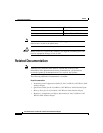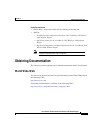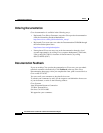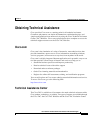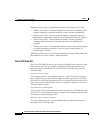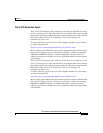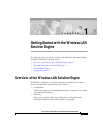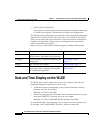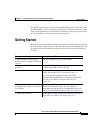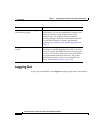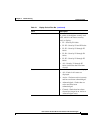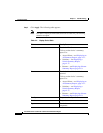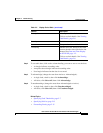
Chapter 1 Getting Started with the Wireless LAN Solution Engine
Date and Time Display on the WLSE
1-2
User Guide for the CiscoWorks 1105 Wireless LAN Solution Engine
78-14092-01
• Fault and Policy Monitoring
Provides device monitoring for fault and performance conditions, monitoring
of LEAP server responses, and monitoring of policy misconfigurations.
The WLSE works by gathering fault, performance, and configuration information
about the Cisco wireless devices that it discovers in your network. The WLSE
allows you to manage the discovered devices. You can customize configuration
templates and apply them, display reports on managed devices and wireless
clients, and monitor device faults.
When you log in to the WLSE, a dashboard appears with the following tabs:
Date and Time Display on the WLSE
The WLSE uses browser (client) time in most of its displays. The format of
timestamps depends on the browser you are using:
• In Internet Explorer, the timestamp is date, tim (hours:minutes:seconds),
timezone, and year; for example:
Mon Mar 25 13:29:21 PST 2002
• In Netscape Navigator, the timestamp is date, time (hours:minutes:seconds),
offset from GMT/UTC, timezone, and year; for example:
Mon Mar 25 13:29:21 GMT-0800 (Pacific Standard Time) 2002
In some WLSE tables, the timestamp is hours:minutes:seconds month/day/year;
for example, 19:23:44 06/29/2002. The time is browser (client) time.
Tab Allows you to ... See...
Faults Display device faults, specify fault thresholds,
specify policies, and enable syslog and traps.
Fault Monitoring, page 2-1.
Configure Create and apply configuration templates and
manage jobs.
Configuring Devices,
page 3-1.
Reports Run, view and email reports. Using Reports, page 4-1.
Administration Perform administrative tasks such as
discovering devices, managing user profiles,
and managing the appliance.
Performing Administrative
Tasks, page 5-1.



